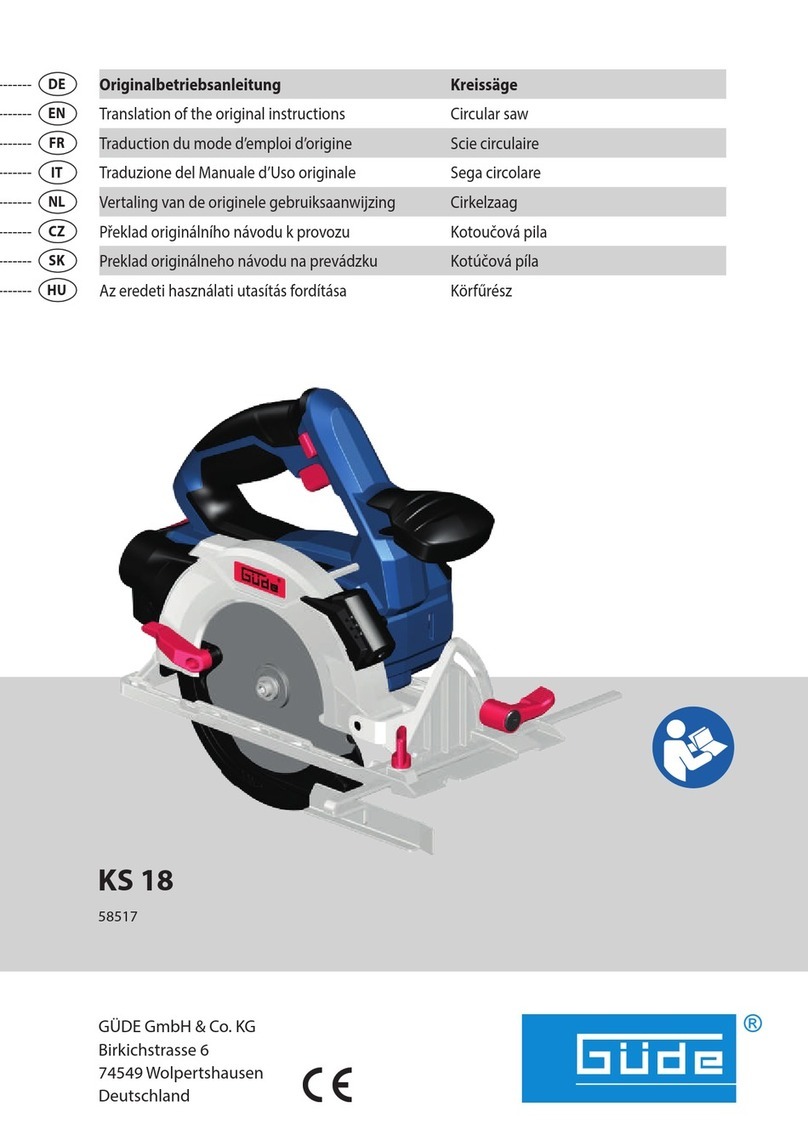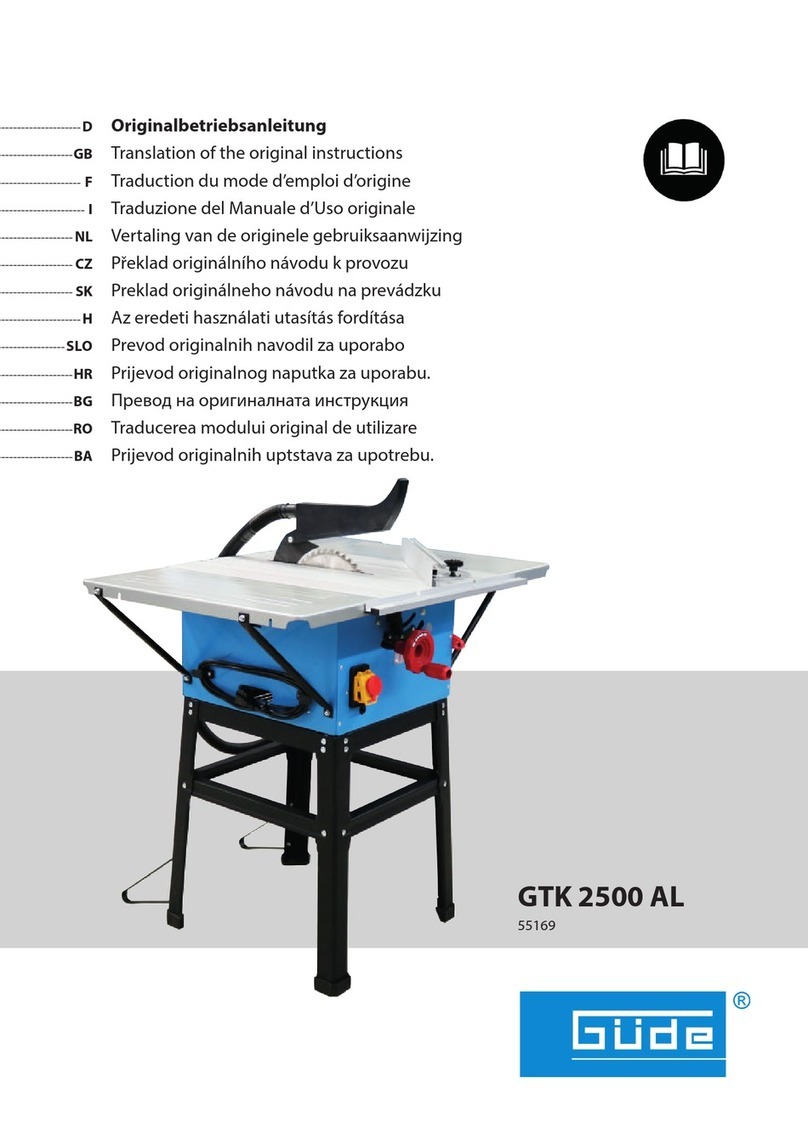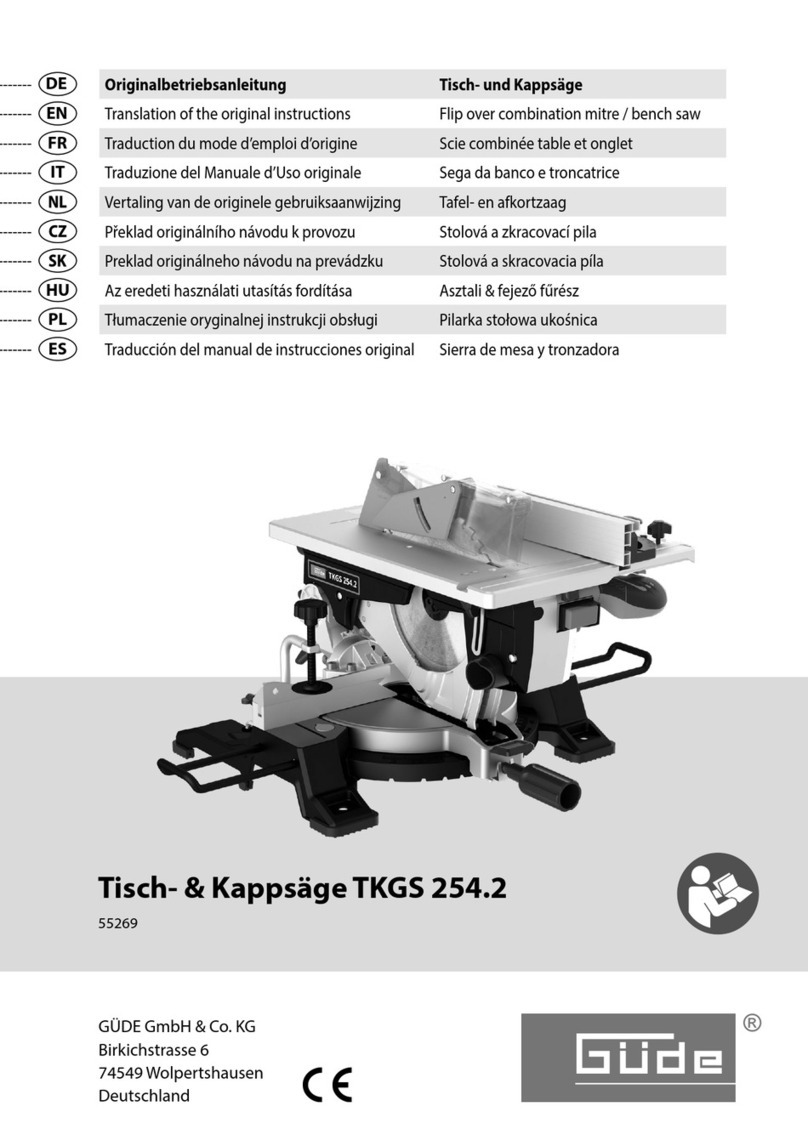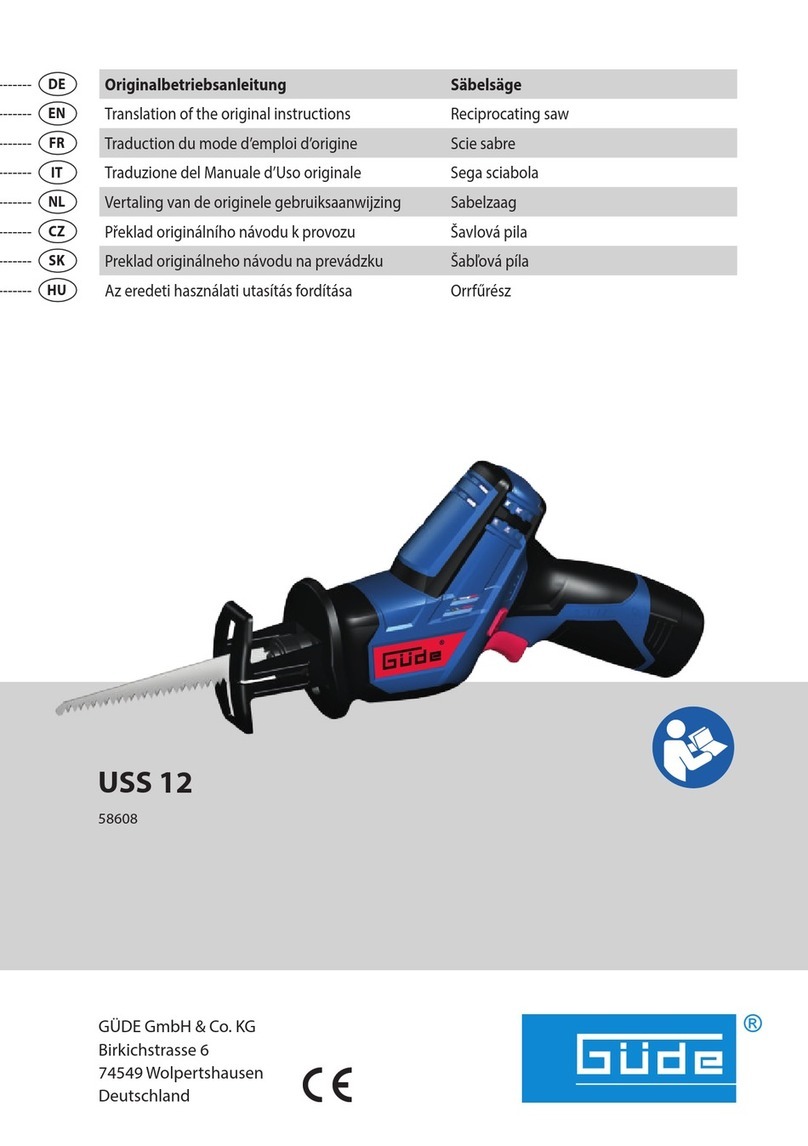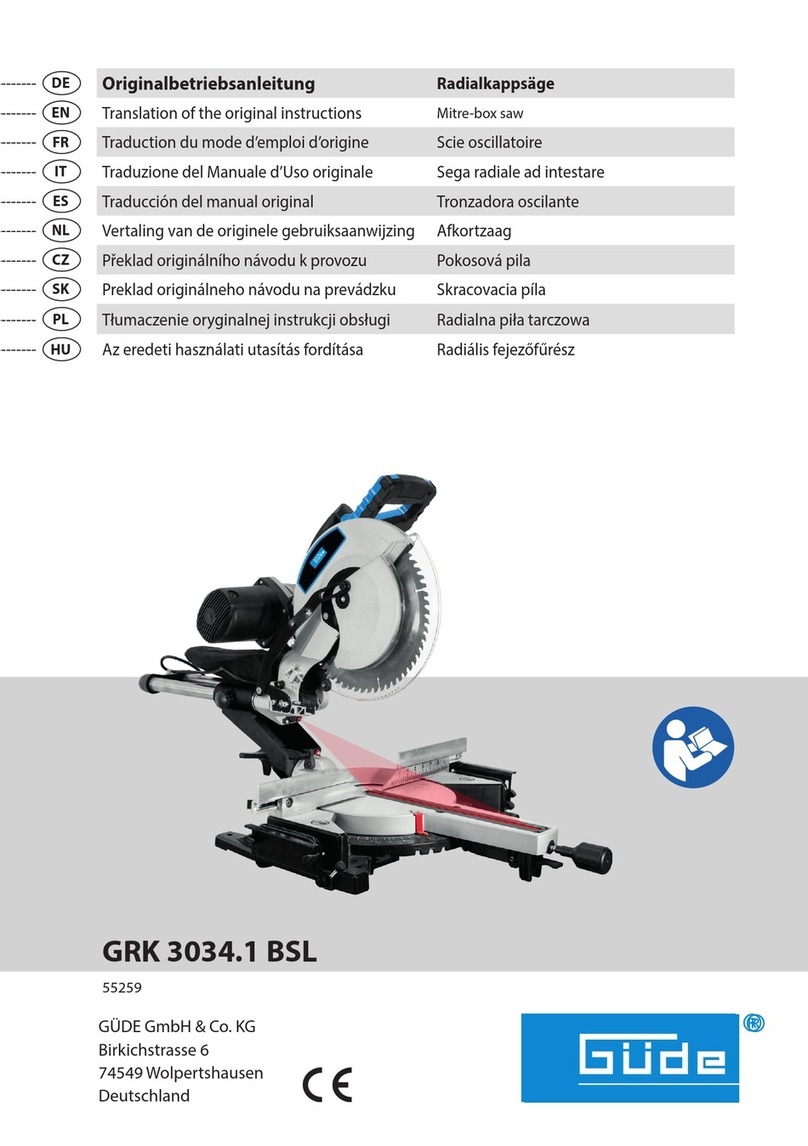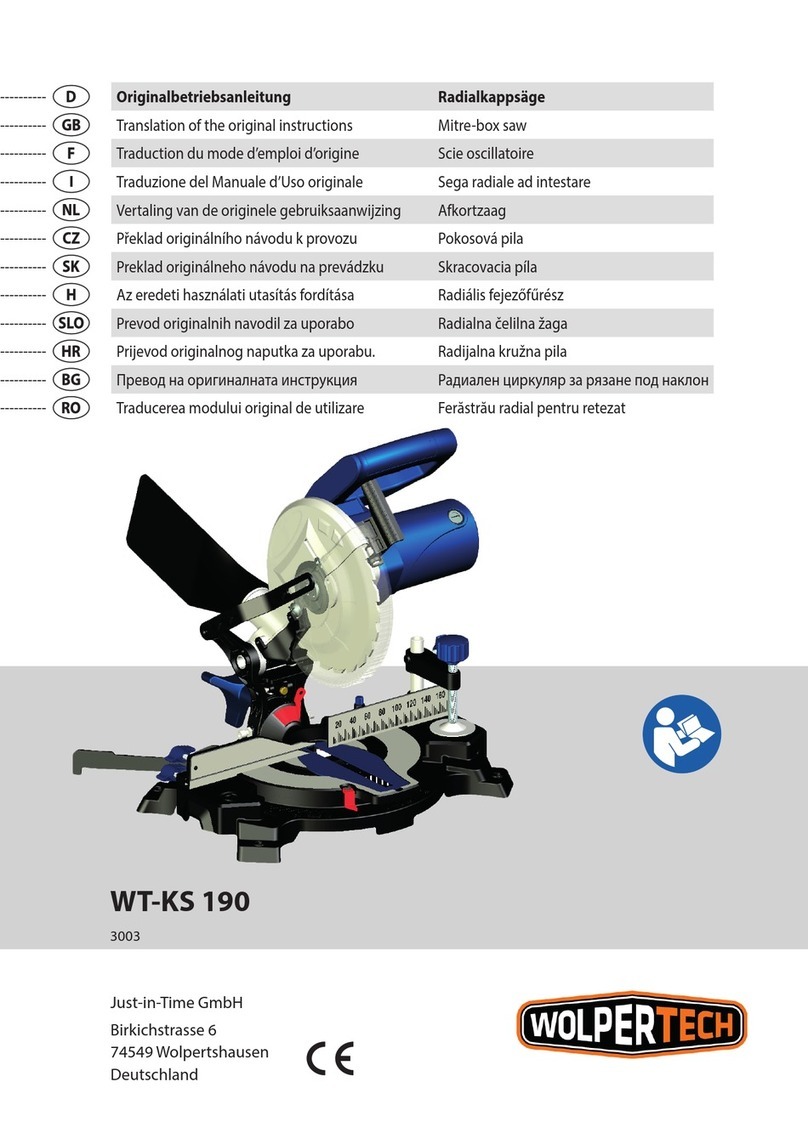
6
-Clean the machine after every work and lubricate with oil to prevent corrosion.
-Use oil SAE-30 to lubricate the saw parts.
-Lubricate the vice parts occasionally.
-It is not necessary to lubricate drive wheels more frequently than annually except for cases of
overloading the saw.
Troubles, Causes, Troubleshooting
Trouble Cause Troubleshooting
Saw band has broken
1. Material to be cut is loosen in
the vice
2. Wrong speed or wrong thrust
3. Too big gap between teeth
on the saw band
4. Work too coarse
5. Unfitting tension of the saw
band
6. The saw band bears on the
piece to be cut before the
motor is witched on
7. The band catches on the
drive or guide wheel rear
edge.
8. Poorly set up saw guide.
9. Too thick saw band
10. Weld crack
1. Tighten up the vice. h
2. Adjust the speed or thrust.
3. Replace the saw band with one
of smaller gap between the teeth
4. Set up the tension of the saw
band so that it will not slip on the
drive wheel when the motor is
switched on and runs at full
speed.
5. Set up the drive wheel so that it
is in parallel with drive wheel. h
6. Set up the saw guide.
7. Use a thinner saw band
8. Have it welded up at a specialist
The band gets blunt
quickly
1. Too coarse saw band
2. Too high speed
3. Inappropriate thrust
4. Hard elements in the material
5. Material too hard
6. The saw band scrolls up
7. Band tension insufficient
8. Band slipping
1. Use finer teething
2. decelerate
3. Reduce the tension of the spring
on the side of the tool. The thrust
will increase
4. Reduce the speed and increase
the thrust
5. Increase the thrust by decreasing
the spring tension
6. Replace the band with a new one
and set up the band tension
7. Increase the tension of the band
using the adjusting knob
8. Increase the tension of the band
using the adjusting knob
and slow down
Unusual wear on the saw
band rear side or from the
side
1. The saw band guide is not all
right any longer
2. The saw band guide bearing
is not set up correctly
3. Loose holding square or the
saw guide
1. Replace
2. Set up precisely m
3. Tighten up
Teeth of the saw band get
broken
1. Too coarse teething for the
given job
2. Too much thrust , too low
speed
3. The material to be cut is
vibrating
1. Use finer teething
2. Reduce thrust, accelerate
3. Tighten the material to be cut
4. Use coarser teething to remove
the sawdust with a brush













